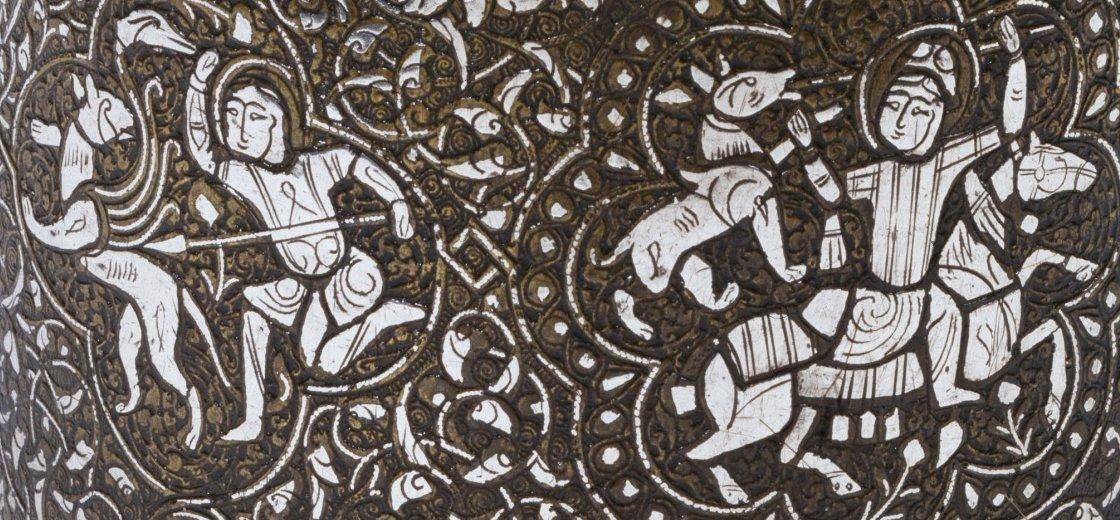
Try Amazon Audible Premium Plus and Get Up to Two Free Audiobooks
Detail of Ayyubid Hunters on a Canister, 1238-40



The lid of this casket depicts the heavens, with the sun, six planets and the signs of the zodiac. The sides illustrate life below, with falconers hunting on horseback and armoured cavalry slaying mythical beasts. The inscription between them, on the side of the lid, names the Ayyubid prince al-Malik al-Adil II, who ruled in Cairo from 1238 to 1240.
In Islamic art, objects made from base materials were often transformed by sophisticated forms of decoration. Brassware, like this piece, was often decorated with inlaid surface ornament.
For larger motifs, metalworkers chiselled out small areas of brass and filled them with thin sheets of silver, gold and copper. They added details by chasing the surface of the softer metals and contrast by using a black filler.
The inlay technique first became popular in eastern Persia (now Iran) in the mid 12th century. It then spread westwards and by 1250 was in use across the Middle East. Its popularity declined after 1500.
Place of Origin: Egypt or Syria
Materials and Techniques: Brass, silver damascened and inscribedVictoria and Albert Museum. Museum no. 8508-1863
Marks and inscriptions: [Lid] The cover is inscribed with the name and titles of al-Adil Abu Bakr II, Sultan of Egypt (1238-1240) [Box] 'Made for the royal pantry of al-Adil'
Decoration includes sun, six planets and signs of the Zodiac.